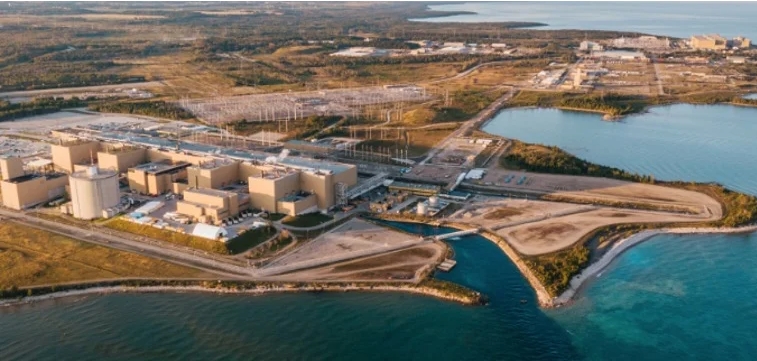
The Bruce site hosts eight operating Candu units at Bruce A (units 1-4 and Bruce B (units 5-8). The new project will be sited within the existing 932-hectare site, with new intake and discharge structures in Lake Huron. Alternative cooling strategies will be evaluated as part of the impact assessment process. The Bruce C Nuclear Project would provide up to 4,800 megawatt-electric of new nuclear generating capacity in Ontario and operate for 60 to 100 years. Several nuclear reactor technologies will be considered for the project. The project assessment is being conducted in collaboration with CNSC.
In 2023, the Government of Ontario announced support for the pre-development work for potential new nuclear at the Bruce Power site in its Powering Ontario’s Growth plan. In February, Canada’s Minister of Energy and Natural Resources, Jonathan Wilkinson, announced a CAD50m ($36.5m) federal investment to advance pre-development work for the Bruce Power project. IAAC and CNSC are now inviting Indigenous Peoples and the public to review the summary of the IDP and provide feedback related to the proposed project by 12 September.
“As we look to expand energy generation, our government remains committed to nuclear refurbishments, a clean energy source that well positions Ontario as a clean energy leader in the world,” said Ontario’s Minister of Energy & Electrification, Stephen Lecce. “Ontario is forecast to double its electricity grid by 2050. Bruce Power plays a vital role in expanding our electricity system so that we continue to deliver clean, reliable, and affordable energy to Ontario families.”
In the lead-up to the IPD submission, Bruce Power put a strong focus on engaging with Indigenous Nations and Peoples, local municipalities and the public, and this focus will continue at every stage of the process.
Bruce Power continues to provide clean energy for Ontario by completing its Life Extension Programme and Major Component Replacement (MCR) project, which will extend the life of the existing site until 2064 and beyond with the refurbishment of units 3-8. “Bruce Power is evaluating the feasibility of expanding its nuclear fleet, to create an option for future electricity planning,” the company said in the IPD. The project description uses a technology-neutral approach through use of a bounding Plant Parameter Envelope (PPE) as the project basis: the final choice of technology will be made later.
The bounding PPE currently includes the available information on four reactor designs: Atkins Réalis’s MONARK pressurised heavy water reactor; Électricité de France’s European Pressurised Water Reactor (EPR); Hitachi-GE Nuclear Energy’s Advanced Boiling Water Reactor (ABWR); GE Hitachi Nuclear Energy’s BWRX-300; and Westinghouse’s AP1000 pressurised water reactor.
Bruce Power withdrew an earlier application for up to four new reactors at the site in 2009 to concentrate on the MCR. The first to undergo the process, Bruce 6, returned to commercial operation last September, and work is progressing ahead of schedule on unit 3. The MCR project will span the next 10 years and add 30-35 years to each plant’s operating life.
“While our priority remains the safe, on-schedule completion of our Major Component Replacement projects, completing the IA (Impact Assessment) creates a valuable option for the future, and we are committed to proceeding in this process in a proactive, open, and transparent manner to engage Indigenous Peoples, local communities, and the broader public,” said Bruce Power Chief Operating Officer and Executive Vice-President James Scongack. The company is “uniquely positioned for potential expansion with decades of experience, a well-studied site with space for expansion, and an experienced workforce.”
According to the IPD, Bruce Power envisages the IA process for Bruce C will take about 3-4 years followed by three years of site preparation, from 2028-2031 Construction and commissioning is expected to take around 14 years (2031-2045) with an operational lifespan of 60-100 depending on the technology selected.